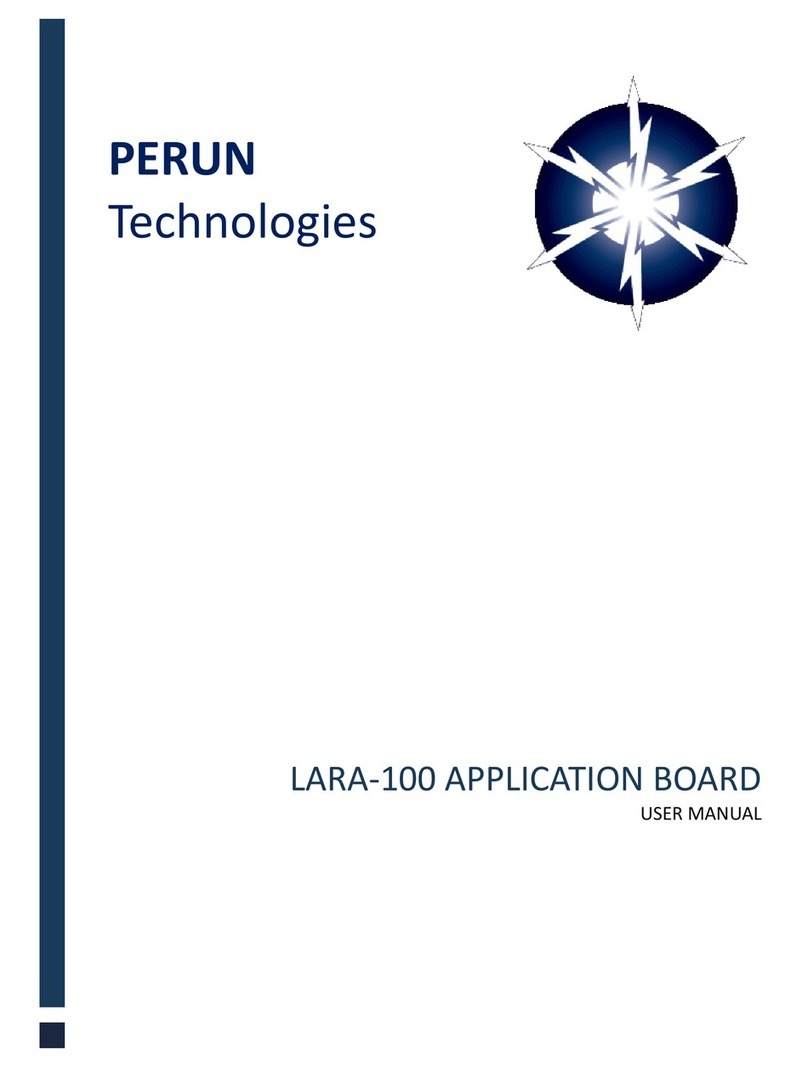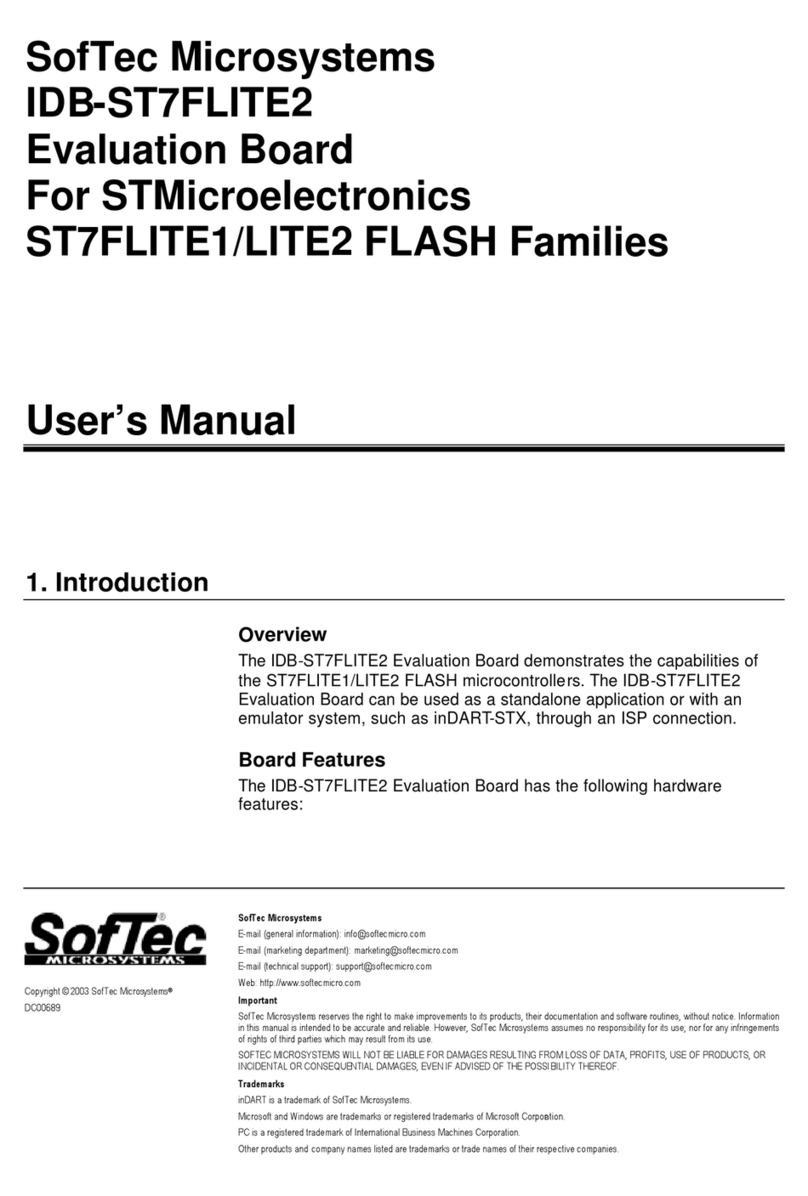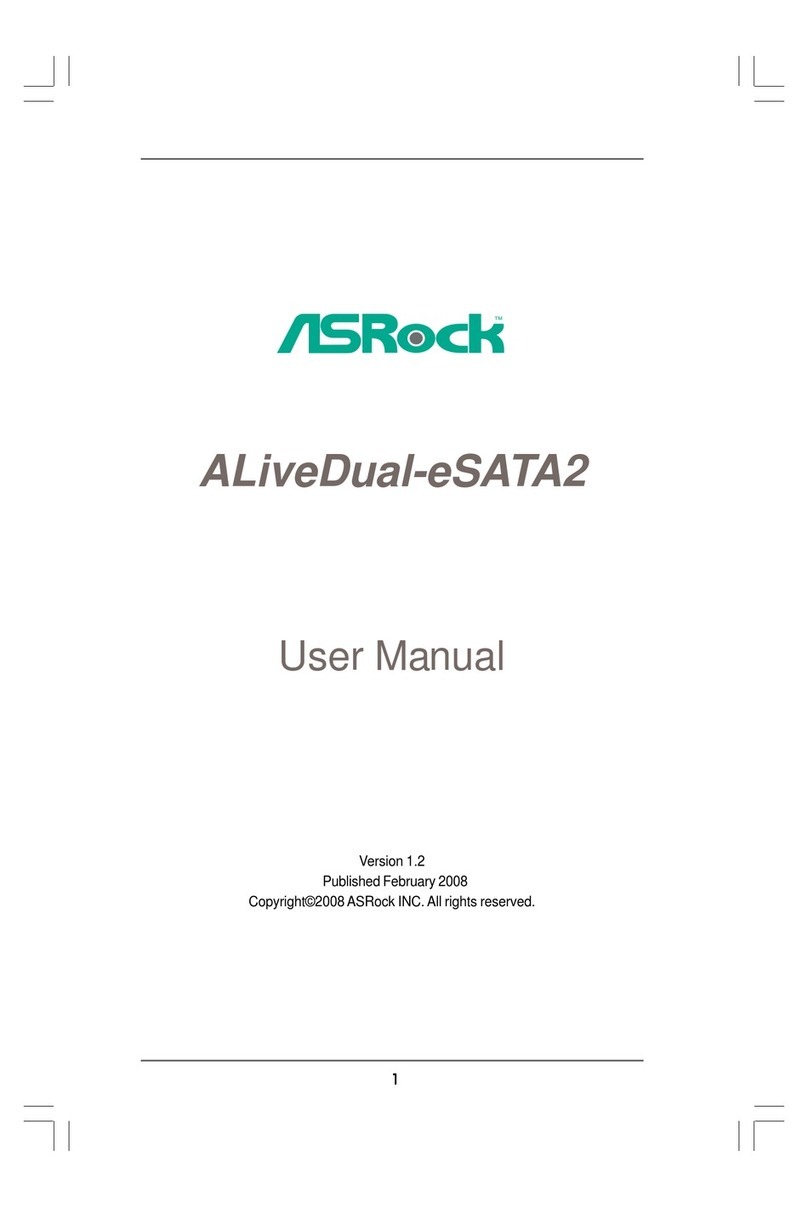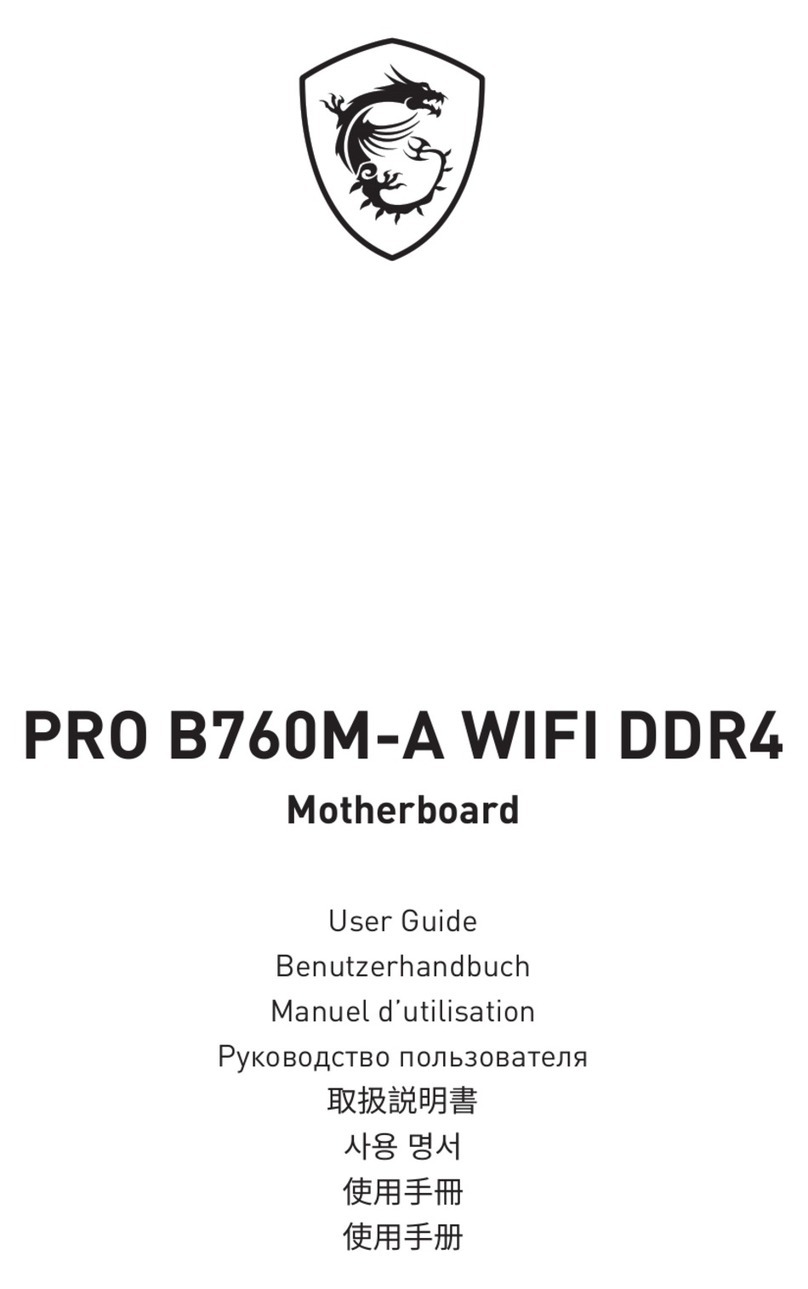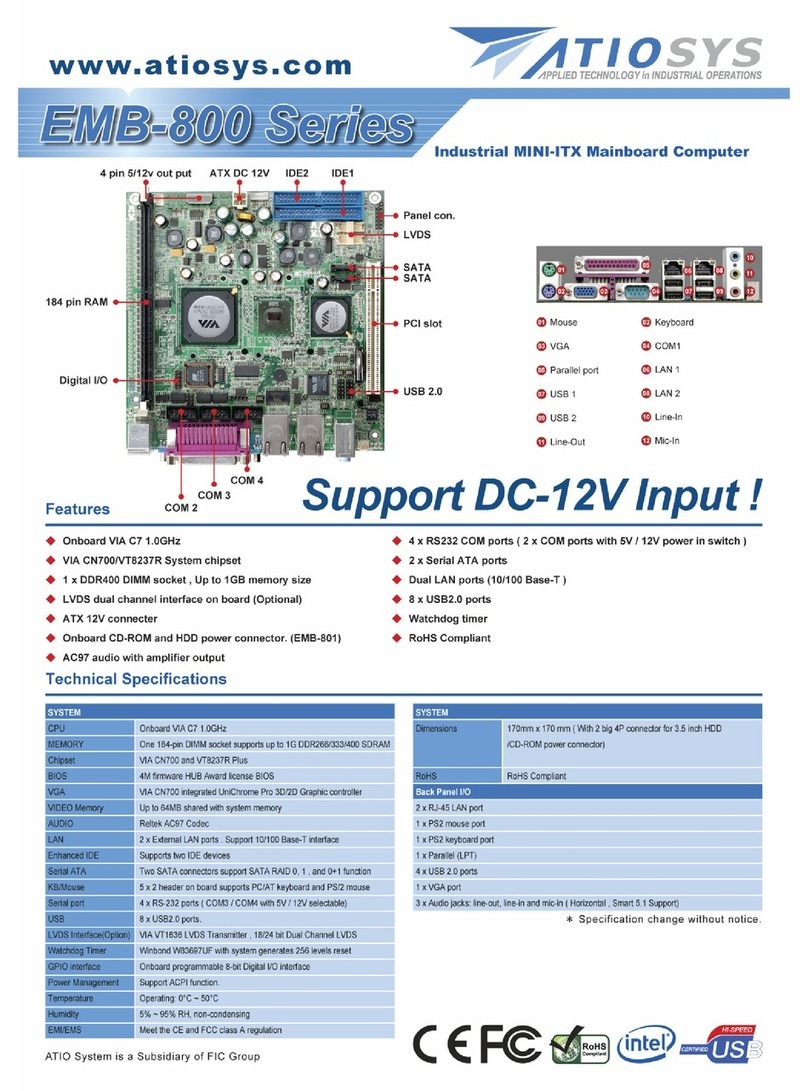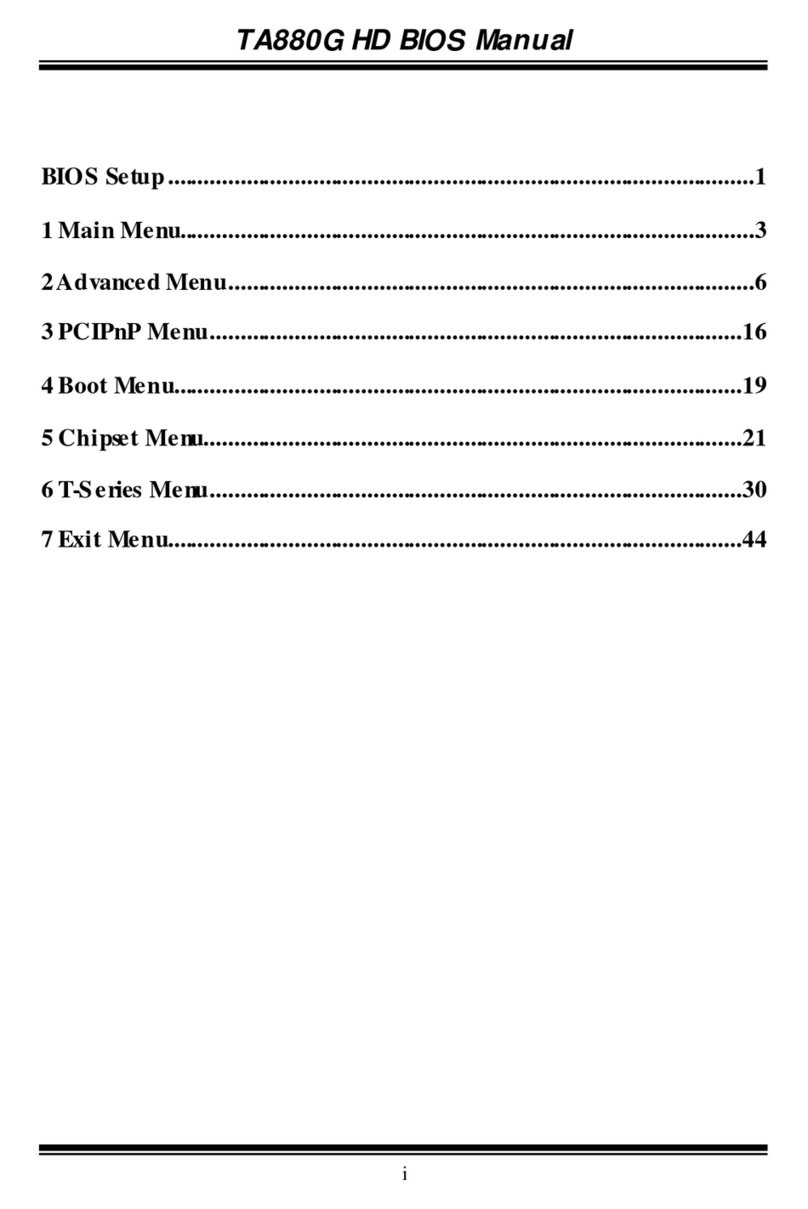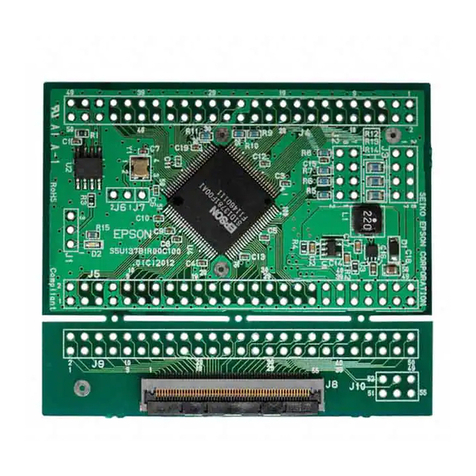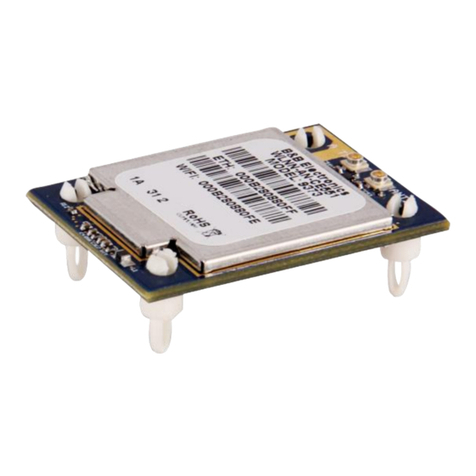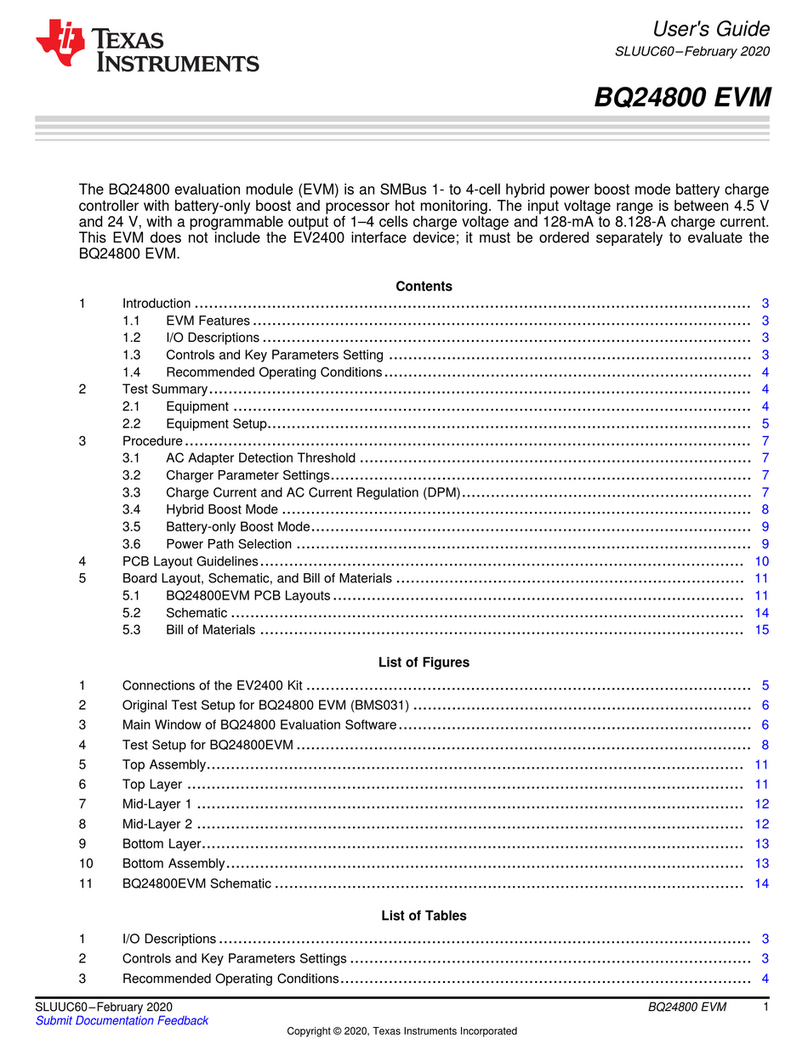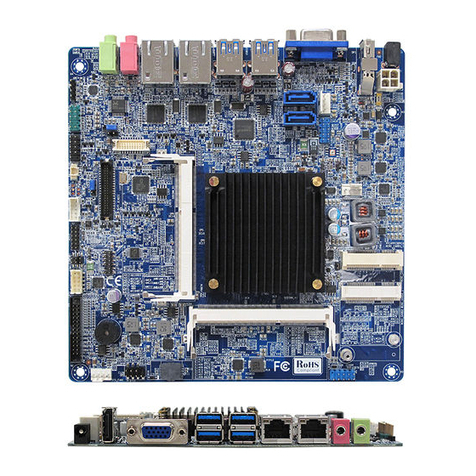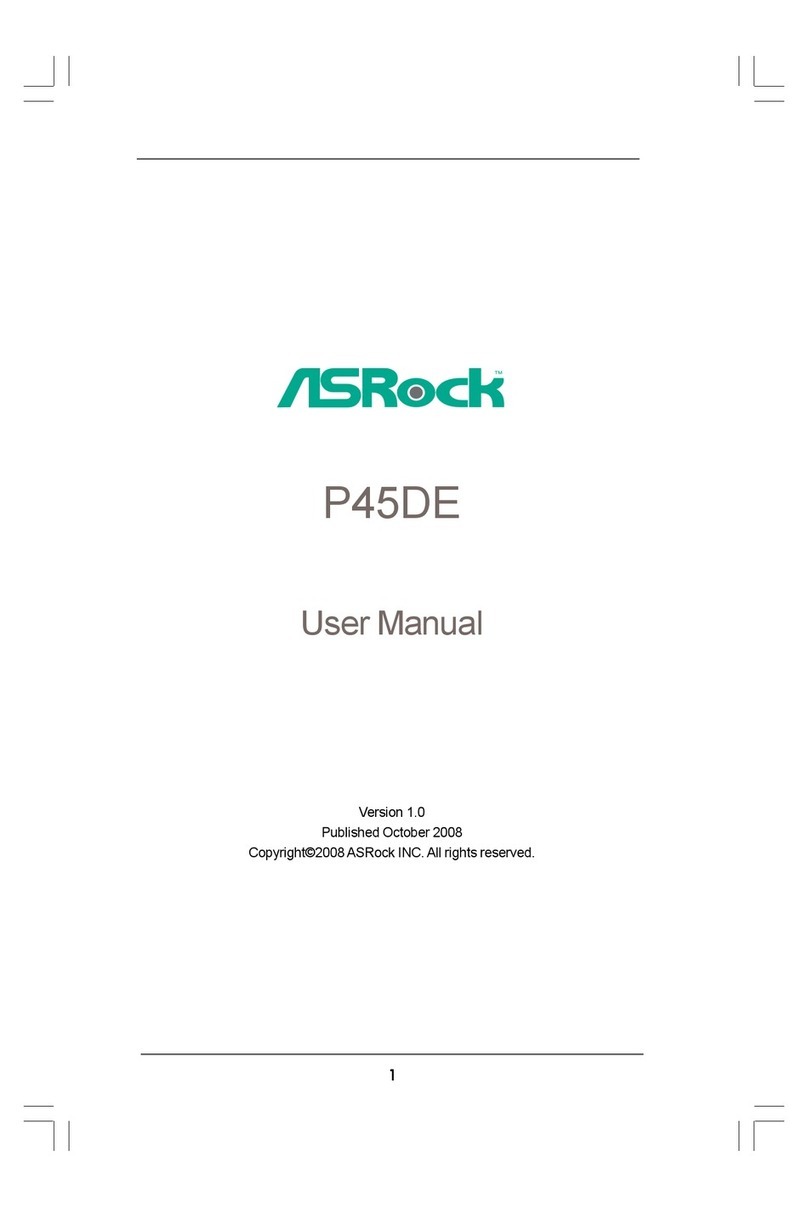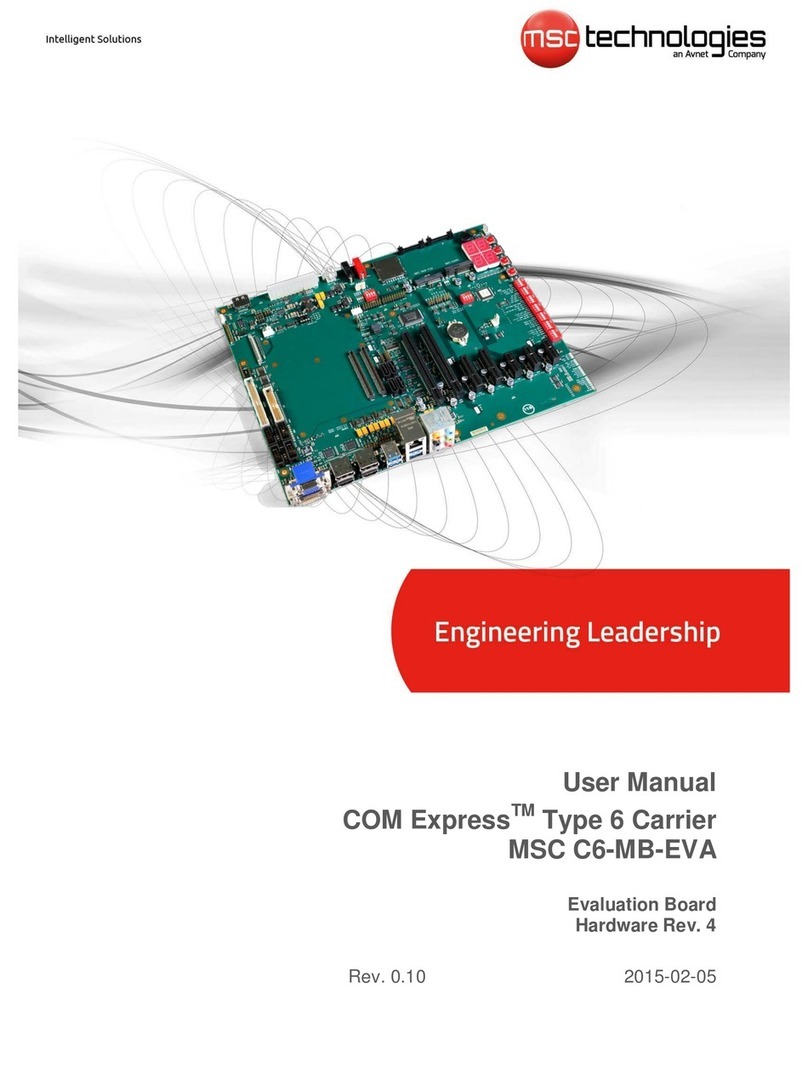Perun Technologies LARA-100 COMM User manual

PERUN
Technologies
LARA-100 COMMUNICATION BOARDS
USER MANUAL

Power Electronics Research Unified Technologies
www.perun-power.com
1
PERUN Technologies
CONTENTS
1 First things first: LARA-100 platform..................................................................................................... 2
1.1 Why LARA-100?............................................................................................................................. 2
1.2 What is LARA-100?........................................................................................................................ 2
2 LARA 100 communication boards ......................................................................................................... 7
2.1 Communication board COMM-01................................................................................................. 7
3 Document history................................................................................................................................ 24

Power Electronics Research Unified Technologies
www.perun-power.com
2
PERUN Technologies
1FIRST THINGS FIRST: LARA-100 PLATFORM
Before we give detailed information about LARA-100 Communication Boards, let us make a brief
introduction in LARA-100 system in order to get a bigger scope.
If you have been already familiar with LARA-100 concepts you can skip this first chapter and proceed
directly to the next.
1.1 WHY LARA-100?
The vision behind LARA-100 is to serve its users as a sort of a LAunch RAmp for Power Electronics
control development, research and education. It emerged as the comprehensive answer to the
permanent need for flexibility and comfortable performance in the PE laboratory.
So, how LARA-100 serves you? Instead of building and maintaining a new test-bench whenever dealing
with new project or application PERUN brings you LARA-100 platform which can be re-configured and
re-used according to your present needs.
Therefore, LARA-100 is designed to solve the following:
1. It replaces standard inflexible laboratory test benches and their exhausting modifications with
the platform which can be configured to cover a variety of applications (motor drives, active
filters, PV converter, FACTS, as well as to support some larger research projects, e.g. micro-grids
and smart grids).
2. LARA-100 interfaces with popular controllers such as Texas Instruments C2000 series following
the simple plug and play principle
3. User’s control algorithm is tested directly from an intuitive software suite called PERUN Power
Desk (PPD) which facilitates:
Embedded oscilloscope function which reduces the need for the external oscilloscope
Supervisory control over the system operation
Tag Explorer with the on-line access (read and write) to all variables and parameters
defined by a user
Signal Analysis Desk which processes and analyzes measured results and
Control Design Desk which helps user to design the new control algorithm or modify the
existing one
1.2 WHAT IS LARA-100?
The idea behind LARA-100 is very simple and it can be summarized as follows (Figure 1): let us take
one standard, market available power electronics converter and transform it into the open and re-
configurable platform. How are we supposed to do so?

Power Electronics Research Unified Technologies
www.perun-power.com
3
PERUN Technologies
Figure 1: LARA-100 concept - reconfigurable platform to support applications in your focus
Simply, we will employ the industrial converter's power stage and combine it with LARA's PowerBox
which contains:
LARA's Expansion Boards and
PERUN PowerDesk software suite.
The role of LARA's Expansion Boards together with the PERUN PowerDesk SW is crucial in the concept
of LARA-100 as the open and configurable platform. The role of Expansion Boards is:
interfacing with popular controllers such as Texas Instruments C2000 series
expanding the scope of possible LARA's applications (motor drives, renewables, automotives,
etc)
communication with variety of external devices such as encoders, resolvers, PLCs, other LARAs,
etc. through CAN, USB, Ethernet, JTAG and RS485.
LARA-100 Expansion Boards are:
LARA-100 Motherboard as the main component together with -
Application Boards
Communication and
GPIO Boards.

Power Electronics Research Unified Technologies
www.perun-power.com
4
PERUN Technologies
LARA-100 Motherboard has two main functions: the
first one is to enable easy plug-in of controllers (Texas
Instruments C2000 series) and the second one is to
host other Expansion boards based on plug-in
principle. You might think of it in similar way as of PC
motherboard.
The role of LARA-100 Application Boards (APP
Boards) is to extend the LARA-100 system
functionalities and features related to specific power
electronics applications. There are two main types of
Application boards: Motor drive and Grid-Connected.
The first one enables direct interfacing with
incremental/absolute encoders, resolvers or tachogenerators. The second one supports interfaces
with grid voltage lines, photovoltaic (PV) strings, currents measurements, etc. i.e. supports grid-
connected applications.
LARA-100 Communication Boards or simply COMM Boards are compact boards for extension of
LARA-100 system with a variety of standard communication interfaces such as Ethernet, CAN or RS-
485 communication buses. Application note: COMM Boards are ideal solution for expanding LARA-
100 power converters in order to form complex systems such as micro- and smart-grids, where
COMMs are connected with supervisory controllers and several LARAs that stand for different grid
elements.
LARA-100 GPIO (General Purpose Input/Output) comes with all sorts of digital and analog input
and output circuitries. Suitable GPIO Board directly interfaces switches, buttons, power relays,
power contactors, power LEDs, meters, or industrial PLCs with LARA-100 system controller. and
quickly build power electronics hardware platform immediately ready for control development and
testing.
LARA's software suite PERUN PowerDesk is responsible for
system configuration
supervisory control
data acquisition
real time access to all controller variables
analysis of measured signals (real time filtering, Fourier)
mathematical manipulations over signals in real time
control design tools (Bode plots, etc.)
Very important fact is that PERUN PowerDesk can be utilized as an integral part of LARA-100 system as
described above, but also it can be employed as a standalone software package. In this scenario a user
can develop and test a control code on Texas Instruments C2000 controller using Perun PowerDesk for
all mentioned purposes except for system configuration (since there is no LARA's hardware). What do
you need in this case? Clearly you need some kind of a docking board to plug in controller and a PC with
installed PERUN PowerDesk. You can use either LARA-100 Motherboard or TI's Experimenter's kit in the
role of the docking board.
Figure 2: LARA-100 Motherboard

Power Electronics Research Unified Technologies
www.perun-power.com
5
PERUN Technologies
Automatic code generation (auto-coding) from Matlab Simulink is supported in PERUN PowerDesk
which makes the process of control design much easier and comfortable. Simply, auto-coding is here to
generate the designed algorithm and PERUN PowerDesk tools proceed with evaluation, testing and re-
design.
LARA-100 with its HW and SW components presents well rounded and open re-configurable platform
(Figure 3).
Frequently asked questions related to PERUN PowerDesk software suite:
Can I use PERUN PowerDesk without LARA-100 hardware?
The answer is yes. You can use PPD for in a standalone version. In that case you can test and debug
your control code for any kind of application. All you need is Texas Instruments C2000 DSP, a PC with
installed PERUN PowerDesk, a docking board for DSP such as TI’s Experimenter Kit or LARA’s
Motherboard
Can I write a control code directly from PERUN PowerDesk?
The answer is no. The writing of control code is performed with the tool which provides controller
manufacturer, for instance Code Composer Studio if you use Texas Instruments Controller. The role of
PERUN PowerDesk is to assist you in Comfortable higher level debugging and testing through Tag
Explorer, Oscilloscope function and real time signal manipulations and analysis.
What is the difference between PPD Standalone and version which comes with LARA-100?
Both versions have the same key features (PERUN Tag Explorer, Oscilloscope and Signal Analysis Desk.
The version which comes with LARA has a link to LARA HW and therefore enables supervisory control
of LARA configured in one of required Power Electronics applications

Power Electronics Research Unified Technologies
www.perun-power.com
6
PERUN Technologies
Figure 3: LARA-100 main components
In the continuation of this document the focus is set to LARA-100 Communication Boards.
Industrial Converter
PERUN’s Expansion Boards
User’s controller
PERUN PowerDesk SW
LARA-100

Power Electronics Research Unified Technologies
www.perun-power.com
7
PERUN Technologies
2LARA 100 COMMUNICATION BOARDS
LARA-100 COMM (communication) is compact board for extension of LARA-100 system functionalities
and features. Motherboard can be interfaced with various COMM Boards that comes with all sorts of
widely used standard communication interfaces, and quickly built-in complex power electronics
platform consisting of two or more LARA-100 systems. COMM Boards are ideal solutions for expanding
LARA-100 power converters in order to form complex systems such as micro- and smart-grids, where
they are connected with supervisory controllers through standard Ethernet, CAN or RS-485
communication buses. In the following chapter one example of communication board will be described
in details.
2.1 COMMUNICATION BOARD COMM-01
COMM-01 board is best solution to add CAN, RS-485, JTAG, UART and USB/UART connectivity to your
LARA-100 system. For each communication interface, board features specialized isolated
transceiver circuits which provides communication physical layer in accordance with their standards. It
is designed for operation in especially-harsh environments, featuring overvoltage protection, as well as
wide common-mode range. Board is designed to allow connection of +3.3 V level controller (Controller
Board) and +5 V level communication buses. PCB design of COMM-01 Board is shown in Figure 4.
Figure 4: LARA 100 communication board COMM-01
Figure 5 illustrates purpose of the external connectors.

Power Electronics Research Unified Technologies
www.perun-power.com
8
PERUN Technologies
Figure 5: LARA 100 communication board COMM-01 connectors
Connectors have the following meaning:
1 –COMM Board interface (J1) –Extend functionalities of your COMM Board through connection of
appropriate Communication Board. Add CAN, RS-485, JTAG, and/or UART connectivity to your LARA-100
system.
2 –RS-485 bus interface (J8) –Connect LARA-100 to RS-485 network. On-board isolated RS-485
transceiver is connected to Controller’s Board (TI DIMM100 controlCard) SCI-C peripheral.
3 –JTAG bus interface (J3) –Connect LARA-100 to JTAG network. This connection can be used to
program/debug your LARA-100 Controller Board with external JTAG programmer/debugger.
4 –CAN bus interface (J4) –Connect LARA-100 system to CAN network. On-board isolated CAN
transceiver is connected to Controller’s Board (TI DIMM100 controlCard) CAN-A peripheral.
5 –UART-A interface (J5) –Connect LARA-100 system with supervisory controller through RS-232 UART
communication bus. This is isolated interface to Controller Board (TI DIMM100 controlCard) SCI-A
peripheral.
6 –USB/UART-C interface (J7) –Optionally, use on-board USB/UART bridge to connect your LARA-100
system with dedicated PC application through standard USB connection.

Power Electronics Research Unified Technologies
www.perun-power.com
9
PERUN Technologies
7 –UART-C interface (J6) –Connect LARA-100 system with supervisory controller through RS-232 UART
communication bus. This is isolated interface to Controller Board (TI DIMM100 controlCard) SCI-C
peripheral.
COMM-01 Board is plug-and-play solution for LARA-100 Motherboard ideal for adding standard
communication connectivity to external networks and supervisory controllers. Controller’s Board Serial
Communication Interface peripheral SCI-C can be used for point-to-point communication over standard
RS-232 (UART) bus, for multipoint communication over RS-485 (RS-422) lines, or optionally for
communication over USB bus using on-board USB/UART bridge circuit. Controller’s CAN-A peripheral is
interfaced with isolated CAN transciever which can be used in connection with CAN network. Isolated
JTAG interface is available for external programming and debugging of LARA-100 controller. The board
is designed to allow interface between +3.3 V level controller and +5 V level external communication
buses. Following figure gives an overview of connection between the controller and external
communication buses.
Figure 6: Overview of connection between controller and encoder - by using COMM-01
Technical specification for COMM-01 communication board
COMM-01 board dimensions, fixture holes and connector position are carefully designed in order to fit
into the original cover box of the industrial power converter. Just plug COMM-01 Board to previously
mounted LARA-100 Motherboard, fix it to the Power Stage cover box and your LARA-100 system and its
controller is ready to communicate within standard communication networks such as CAN, RS-485 or
simple RS-232. In this way, complete LARA-100 system have compact external layout as industrial
drives, which is not usual case with open development platforms. On the following figure you can see
the dimensions of the COMM-01 communication board.

Power Electronics Research Unified Technologies
www.perun-power.com
10
PERUN Technologies
Figure 7: LARA 100 communication board COMM-01 dimensions
Following figures represent process of mounting communication board on the industrial power stage
(only mechanical cover is shown).
Figure 8: Power Stage cover box with LARA-100 Motherboard aligned with COMM-01 Board
for mounting (left fig.). COMM-01 Board mounted on LARA-100 Motherboard and Power
Stage cover box (right fig.).

Power Electronics Research Unified Technologies
www.perun-power.com
11
PERUN Technologies
Figure 9: COMM-01 Board mounted on LARA-100 Motherboard and Power Stage cover box.
Look from top. (left fig.) COMM-01 Board mounted on LARA-100 Motherboard and Power
Stage cover box. Look from front (right fig.).
Connections - Communication Board connector (J1)
COMM-01 board has SAMTEC MMS-114-02-F-DV
28-pin female connector (2.00 mm Tiger Claw
Socket Strip, double row, 14-pins per row) for direct
use with LARA-100 Motherboard. It fits to
Motherboard’s SAMTEC TW-14-07-F-D-350-SM-000
Communication Board connector and allow simple
plug-and-play concept for extending Motherboard
functionalities in terms of connectivity to various
communication networks and supervisory
controllers.
Figure 10: LARA 100 communication (COMM)
Board connector (J1) –PCB overview

Power Electronics Research Unified Technologies
www.perun-power.com
12
PERUN Technologies
Pin assignments of Communication Board connector on COMM-01 board, related to the Motherboard
and Controller Board (TI DIMM100 control Cards) is given in following table.
Table 1: Pin assignment of communication board (COMM-01)
Pin
Signal
Description
1
+3.3V
+3.3 V power supply on Communication Board.
2
+5V
+5 V power supply on Communication Board.
3
GND
Ground reference for Communication Board power supply
(+3.3V and +5 V).
4
+5V
+5 V power supply on Communication Board.
5
GPIO-17/SPISOMI-
A/CANRX-B
Pin directly connected to Controller Board general purpose
input/output GPIO-17. Not used on COMM-01 board.
6
+3.3V
+3.3 V power supply on Communication Board.
7
GPIO-19/SPISTE-
A/SCIRX-B
Pin directly connected to Controller Board general purpose
input/output GPIO-19. Not used on COMM-01 board.
8
GPIO-16/SPISIMO-
A/CANTX-B
Pin directly connected to Controller Board general purpose
input/output GPIO-16. Not used on COMM-01 board.
9
GPIO-63/SCITX-C
Pin directly connected to Controller Board general purpose
input/output GPIO-63. This pin function as transmit (TX)
pin on controller’s Serial Communication Interface
peripheral SCI-C. It is used in communication over UART-C,
USB or RS-485 networks.
10
GPIO-18/SPICLK-
A/SCITX-B
Pin directly connected to Controller Board general purpose
input/output GPIO-18. Not used on COMM-01 board.
11
GPIO-29/SCITX-
A/TXD
Pin directly connected to Controller Board general purpose
input/output GPIO-29. This pin function as transmit (TX)
pin on controller’s Serial Communication Interface
peripheral SCI-A. By default, SCI-A peripheral is reserved
for communication with PERUN PowerDesk software.
Optionally, it can be used as another RS-232 (UART)
communication port.
12
GPIO-62/SCIRX-C
Pin directly connected to Controller Board general purpose
input/output GPIO-62. This pin function as receive (RX) pin
on controller’s Serial Communication Interface peripheral
SCI-C. It is used in communication over RS-232 (UART-C),
USB or RS-485 network.
13
GPIO-31/CANTX-A
Pin directly connected to Controller Board general purpose
input/output GPIO-31. This pin function as transmit (TX)

Power Electronics Research Unified Technologies
www.perun-power.com
13
PERUN Technologies
Pin
Signal
Description
pin on controller’s CAN-A peripheral.
14
GPIO-28/SCIRX-
A/RXD
Pin directly connected to Controller Board general purpose
input/output GPIO-28. This pin function as receive (RX) pin
on controller’s Serial Communication Interface peripheral
SCI-A. By default, SCI-A peripheral is reserved for
communication with PERUN PowerDesk software.
Optionally, it can be used as another RS-232 (UART)
communication port.
15
GPIO-33/I2CSCL
Pin directly connected to Controller Board general purpose
input/output GPIO-33. Not used on COMM-01 board.
16
GPIO-30/CANRX-A
Pin directly connected to Controller Board general purpose
input/output GPIO-30. This pin function as receive (RX) pin
on controller’s CAN-A peripheral.
17
JTAG_RTCK
Return clock signal for JTAG interface. Transmit clock signal
JTAG_TCK is routed back and buffered on Motherboard
through this pin, in order to support high-speed (12 MHz)
JTAG communication over longer lines.
18
GPIO-32
Pin directly connected to Controller Board general purpose
input/output GPIO-32. This pin function as RS-485
transceiver enable pin. Active low signal on this pin will
enable RS-485 transceiver and corresponding PLUS and
MINUS differential inputs.
19
GND
Ground reference for Communication Board power supply
(+3.3V and +5 V).
20
JTAG_TCK
Transmit clock signal for JTAG interface.
21
JTAG_TDI
Test data input (TDI) signal for JTAG interface.
22
JTAG_TMS
Test mode select (TMS) signal for JTAG interface.
23
JTAG_TRSTn
Test reset (TRSTn) signal for JTAG interface.
24
JTAG_TDO
Test data output (TDO) signal for JTAG interface.
25
JTAG_EMU0
Emulation (EMU0) input for JTAG interface.
26
JTAG_EMU1
Emulation (EMU1) input for JTAG interface.
27
SDA
Pin reserved for communication link with PERUN
PowerDesk software through Motherboard USB
connection.
28
SCL
Pin reserved for communication link with PERUN
PowerDesk software through Motherboard USB
connection.

Power Electronics Research Unified Technologies
www.perun-power.com
14
PERUN Technologies
Communication (COMM) Board connector (J1) is shown in the figure below
Figure 11: LARA 100 communication (COMM) Board connector pinout definition
JTAG connector (J3)
COMM-01 board has standard 14-pin connector (part number: SBH11-PBPC-D07-ST-BK; 2.54 mm pitch,
male pin, double row, vertical, shrouded header with polarizing key) for connection to external JTAG
programmers/debuggers with standard matching 14-pin female connector. Directly connect TI XDS-100,
Spectrum Digital XDS-510, Blackhawk C2000, or similar JTAG emulators if you are not planning to use
Motherboard’s built-in XDS-100 v1 JTAG emulator.
Figure 12: LARA 100 communication (COMM) JTAG connector (J3) –PCB overview
JTAG connector has standard pinout assignment related to 14-pin JTAG emulators, and is given in the
following table:

Power Electronics Research Unified Technologies
www.perun-power.com
15
PERUN Technologies
Table 2: Pin assignment of JTAG connector
Pin
Signal
Description
1
TMS
Test Mode Select signal on external (user’s) JTAG bus.
2
TRSTn
Test Reset signal on external JTAG bus.
3
TDI
Test Reset signal on external JTAG bus.
4
GND_ISO
Ground reference for external JTAG bus.
5
+5V_ISO
+5 V power supply for external JTAG emulator (TVD signal).
6
N.C. / KEY
Not connected. Missing pin on JTAG connector, functioning
as key pin for proper connection of external JTAG emulator.
7
TDO
Test Data Output signal on external JTAG bus.
8
GND_ISO
Ground reference for external JTAG bus.
9
RTCK
Return Clock signal on external JTAG bus.
10
GND_ISO
Ground reference for external JTAG bus.
11
TCLK
Transmit Clock signal on external JTAG bus.
12
GND_ISO
Ground reference for external JTAG bus.
13
EMU0
Emulation input EMU0 on external JTAG bus.
14
EMU1
Emulation input EMU1 on external JTAG bus.
Figure 13: LARA 100 communication (COMM) JTAG connector (J3) with pinout

Power Electronics Research Unified Technologies
www.perun-power.com
16
PERUN Technologies
CAN connector (J4)
COMM-01 board has Molex Micro-Fit 3.0
0430450412 connector (3.00 mm pitch, male pin,
double row, vertical, shrouded header with locking
ramp) for connection to external CAN network.
User can use matching Molex Micro-Fit 3.0
receptacle female socket 0430250400 with
0430300001 crimp contacts to wire (20-24 AWG)
your LARA-100 system to CAN network.
CAN bus connector pinout assignment is given in the following table:
Table 3: Pin assignment of CAN connector
Pin
Signal
Description
1
CANH
CAN High (Plus) signal in external CAN communication
network. Differential CAN bus +5V level signals CANH and
CANL are transceived with on-board CAN isolator and
conditioned for +3.3 V controller’s CAN-A peripheral (GPIO-
30/CANRX-A and GPIO-31/CANTX-A pins).
2
CANL
CAN Low (Minus) signal in external CAN communication
network.
3
GND_ISO
Ground reference for external CAN network.
4
GND_ISO
Ground reference for external CAN network.
Figure 14: LARA 100 communication
(COMM) CAN connector (J4) –PCB
overview

Power Electronics Research Unified Technologies
www.perun-power.com
17
PERUN Technologies
Figure 15: LARA 100 communication (COMM) CAN connector (J4) with pinout
UART-A connector (J5)
COMM-01 board has Molex Micro-Fit 3.0 0430450412 connector (3.00 mm pitch, male pin, double row,
vertical, shrouded header with locking ramp) for connection to external RS-232 UART network.
Controller’s SCI-A peripheral is used for communication over UART-A port. Use matching Molex Micro-
Fit 3.0 receptacle female socket 0430250400 with 0430300001 crimp contacts to wire (20-24 AWG)
your LARA-100 system to UART-A network, if SCI-A peripheral is not reserved and used as default
communication link with PERUN PowerDesk.
Figure 16: LARA 100 communication (COMM) UART-A connector (J4) –PCB overview

Power Electronics Research Unified Technologies
www.perun-power.com
18
PERUN Technologies
UART-A connector pinout assignments, related to Motherboard and Controller Board (TI DIMM100
control Card) is given in the following table:
Table 4: Pin assignment of UART-A connector
Pin
Signal
Description
1
RX-A / GPIO-
28/SCIRX-A/RXD
Receive (RX) pin in external UART-A network. At this pin,
board receives +5 V level signal in RS-232 UART network,
isolate and adapt signal for +3.3 V level controller’s SCI-A
peripheral GPIO-28/SCIRX-A/RXD input pin. By default, it is
not suggested to use UART-A port, because SCI-A
peripheral is reserved for communication with PERUN
PowerDesk software. Instead, it is suggested to use UART-C
port and controller’s SCI-C peripheral if RS-232 UART
communication is required. If user doesn’t use SCI-A
peripheral with PowerDesk software and require another
independent UART port, he can use UART-A for regular
external RS-232 communication.
2
TX-A / GPIO-
29/SCITX-A/TXD
Transmit (TX) pin in external UART-A network. At this pin,
board transmits +5 V level signal in RS-232 UART network,
which is obtained after isolation and conditioning of +3.3 V
level controller’s SCI-A peripheral GPIO-29/SCITX-A/TXD
output pin.
3
GND_ISO
Ground reference for external UART-A network.
4
GND_ISO
Ground reference for external UART-A network.
Figure 17: LARA 100 communication (COMM) UART-A connector (J5) with pinout

Power Electronics Research Unified Technologies
www.perun-power.com
19
PERUN Technologies
UART-C (J6) and USB/UART-C connectors (J7)
UART-C connector (J6) –COMM-01 board has Molex Micro-Fit 3.0 0430450412 connector (3.00 mm
pitch, male pin, double row, vertical, shrouded header with locking ramp) for connection to external
RS-232 UART network. Controller’s SCI-C peripheral is used for communication over UART-C or
USB/UART-C ports. User can select either standard RS-232 UART connection or either USB connection
with controller’s SCI-C peripheral, not both. User can use matching Molex Micro-Fit 3.0 receptacle
female socket 0430250400 with 0430300001 crimp contacts to wire (20-24 AWG) your LARA-100
system to UART-C network.
USB/UART-C connector (J7) –COMM-01 board has standard USB mini-B receptacle connector (TE
Connectivity part number: 1734753-1) for connection to external USB bus. UART Bridge and isolation
circuits are used for connection of controller’s SCI-C peripheral to USB port. User can select either USB
connection or either standard RS-232 UART connection with controller’s SCI-C peripheral. User can use
standard USB A male to USB mini B male cables (like Molex part number: 0887328902) to connect
LARA-100 system to PC USB port and dedicated supervisory control application.
Figure 18: LARA 100 communication (COMM) UART-C (J6) and USB/UART-C connectors (J7) –
PCB overview
UART-C (J6) connector pinout assignments, related to Motherboard and Controller Board (TI DIMM100
control Card) is given in the following table:
Other manuals for LARA-100 COMM
2
Table of contents
Other Perun Technologies Motherboard manuals
